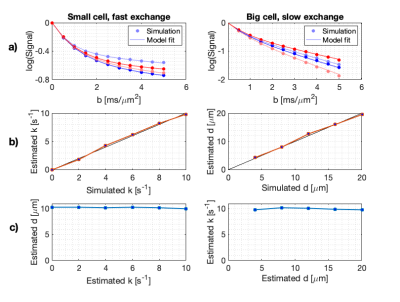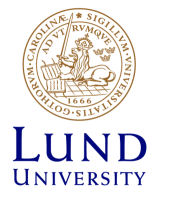Arthur Chakwizira1, Filip Szczepankiewicz2, Linda Knutsson1,3, and Markus Nilsson2
1Department of Medical Radiation Physics, Lund University, Lund, Sweden, 2Department of Diagnostic Radiology, Lund University, Lund, Sweden, 3Russell H. Morgan Department of Radiology and Radiological Science, Johns Hopkins University School of Medicine, Baltimore, MD, United States
1Department of Medical Radiation Physics, Lund University, Lund, Sweden, 2Department of Diagnostic Radiology, Lund University, Lund, Sweden, 3Russell H. Morgan Department of Radiology and Radiological Science, Johns Hopkins University School of Medicine, Baltimore, MD, United States
We have proposed a general theory for describing restricted diffusion and water exchange for any gradient waveform, b-value and diffusion encoding time. We validated the model by numerical simulations that show good agreement with ground truth.

Figure 3: Contrast and goodness of fit for different combinations of restriction and exchange. Panel (a) shows that the proposed model describes that data well in all simulated cases. (b) Exchange rate and cell size estimates are in good agreement with simulation. (c) Changes in exchange rate for a fixed size do not erroneously manifest in our model as a change in size. This demonstrates the independent contributions of restriction and exchange to the signal as captured by our model.

Figure 4: Demonstration of the robustness of the developed theory to ultrahigh b-values and long encoding times. Panel (a) shows a good agreement between model and simulation for all considered b-values. Panels (b) and (c) show that the theory produces stable estimates of size and exchange over the entire range of simulates b-values and encoding times.
